Day 8: Cortona
A bit about the Hotel San Michele…..it is handsome palazzo located just below the main piazza in Cortona…..our room is quite large and the light is not too bad. It has a tiled floor and a beamed ceiling and two windows that look out over the narrow Via Guelfa and the roofs of the buildings across the street. The bed is very comfortable, the bathroom is good-sized and the shower is excellent–lots of pressure and hot water. The breakfast room is large and the bread, pastries, fruit, yogurt, etc. are fine. There is a large, ornate sitting room on the second floor with a large fireplace but no one seems to use it…the light is certainly inadequate for reading. There are also a couple of outside areas–balconies and an interior court, but the sun doesn’t reach those areas and it is mostly too cool to sit outside. The staff is not particularly friendly or solicitous but on the whole, we are happy staying here.
Today we are going to Lake Trasimeno, a large, shallow lake just to the south of Cortona in the southwestern corner of Umbria. Before heading out, we stop at Alessandra’s shop and Diana has fun choosing a wedding present for a couple whose wedding we’ll be attending in November.
We take a roundabout route out of Cortona that takes to the east through very scenic mountain scenery–the forested hills are dotted with castles and small towns. The roads bends back to the west and suddenly the lake appears over the edge of the hill. The lake is almost circular and there are several islands in the middle. The entire lake shore is ringed with green woods and it looks very inviting. (When we report this to our son Seth–who, along with his brother Michael, once bicycled around the lake from Perugia on a hot, humid day in August on delapidated rented bikes– his only comment is “Lake Trasimeno is a mosquito-ridden swamp.” We don’t share his opinion on this slighly overcast day in October.)
Our first stop is the beach in Tuoro sul Trasimeno….it is just about deserted on a Tuesday morning in early October, but the beach looks nice, the water looks clean, there are bars and restaurants, playgrounds, a ferry dock, and a park with modern statues on the shore.
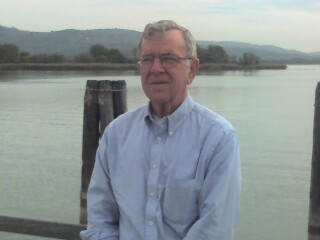
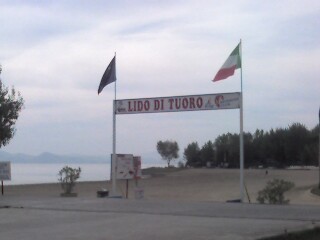
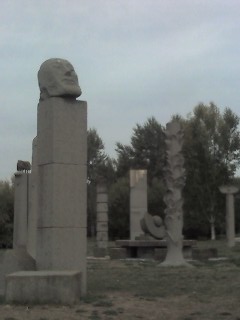
We walk out on the long ferry pier, survey the lake, have a coffee and move on–in search of the site of Hannibal’s victory over the Romans in 217 BC. There is supposedly a driving itinerary that guides you through the valley where the battle took place but the “percorso” is poorly signed and the newly built observation platforms along the route have no explanatory material–only blank signboards.
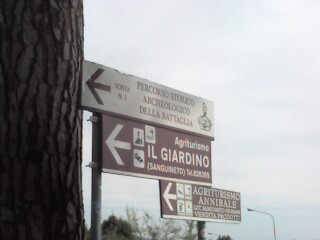
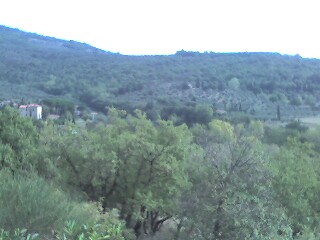
In any case, we get a picture of what it was like on the day of the battle–the Roman army trapped in the low-lying terrain and hemmed in by the lake and Hannibal’s army swooping down on them from the hills above to defeat them soundly. Sanguinetto–one of the hamlets on the route–refers to the bloody battle and the name Annibale frequently appears in the names of agriturismi and B&Bs.
After surveying the battlefield, it is time for lunch so we drive to Castiglione del Lago, a very pretty village set on a small hill overlooking the west shore of the lake. Castiglione del Lago is a member of the association called “I Borghi Piu Belli d’Italia” and, in fact, it is quite “bello”. There is a castle, a palazzo and very well kept main street; the village sits on a peninsula jutting out into the lake so there are views on both sides.
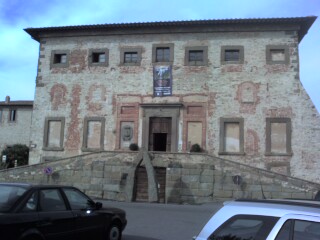
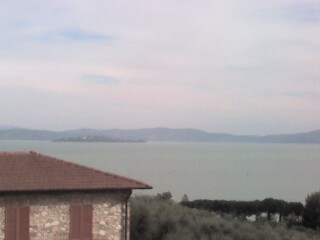
The weather has improved since the morning and we choose a restaurant with an outdoor dining terrace though we notice all the non-Italians sit out there and the Italian customers sit inside -no doubt they think it’s too cool outdoors.
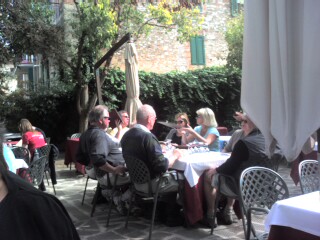
Lunch is very pleasant and the food is very good. I have the Trasimeno menu–carp roe spread on toast, a tasty spaghetti with a fish sauce and a delicious piece of roast carp. Diana has an unmemorable first course and a beautifully prepared lake trout. A half liter of local white wine goes down very easily.
Back in Cortona, we spend an hour in the Etruscan Museum. There is an extensive collection of Etruscan and Roman finds from the area that are beautifully displayed in the grand palazzo…lots of glass cases and innovative presentations. The highlights of the collection are the Tabula Cortonensis–bronze plaques from the 2nd or 3rd century B.C., that is inscribed with a legal text written in the Etruscan language– and an extremely elaborate and intricate Etruscan bronze candlelabra from the 5th century B.C.
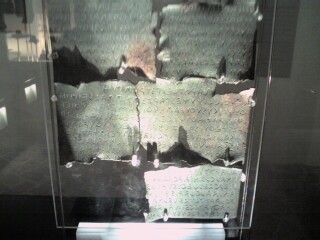
On the upper floors, there is one room devoted to the 20th century painter, Cortona-born Gino Severini, which has some of his Futurist works and some more representational pictures, and some very nice paintings by Signorelli, da Cortona and Pinturicchio.
Our only complaint with the museum is the difficult to follow explanatory material; much of it appears in English but is displayed in a hard to read format and is translated with a heavy hand.
We meet Alessandra in the Piazza Signorelli (in front of her shop) and go to the Osteria del Teatro a few blocks up the hill. Dinner is both very tasty and a lot of fun…Alessandra is great company. The restaurant is nearly full on this Tuesday night (Note: whenever you go to Cortona, make reservations for dinner.) but it is pleasantly full…not too noisy. I have a farro soup with mushrooms and a lamb shank–both very good, Diana has a stuffed pasta with pear and walnut sauce to start and she and Alessandra have a very good filet with pepper sauce and parmesan cheese. They have charlotte russe for dessert and we drink an excellent bottle of a local syrah.
We say good night promising to stop by her shop in the morning before we leave for Bologna.
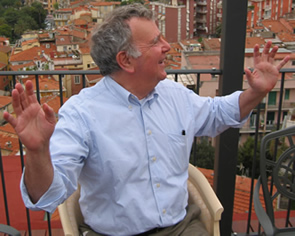

0 Comments:
Post a Comment
<< Home